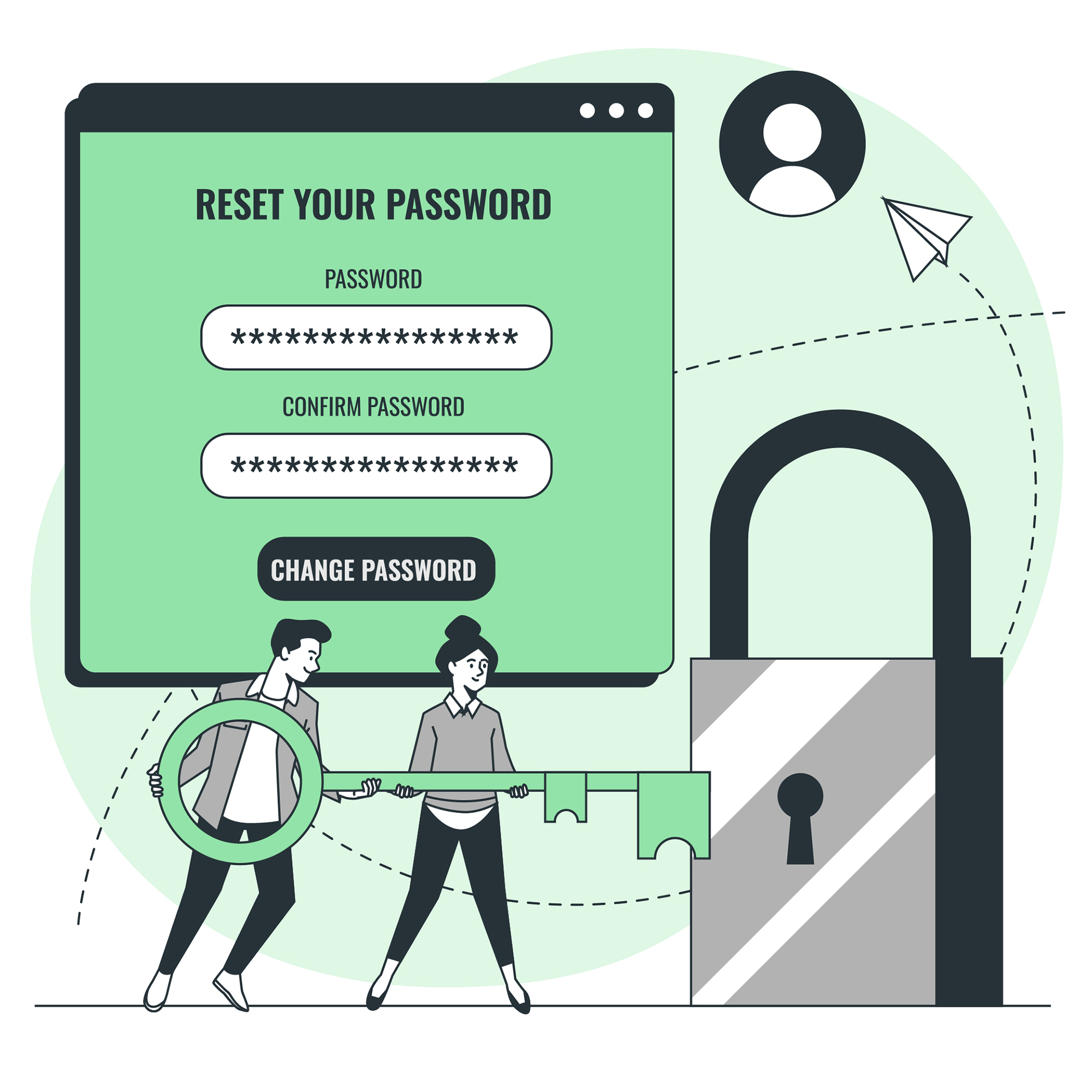Understanding Cybersecurity Fundamentals
Cybersecurity is the practice of protecting systems, networks, and data from digital attacks. It encompasses a broad spectrum of activities aimed at preventing unauthorized access, data loss, and disruption of services. Cybersecurity threats range from viruses and malware to sophisticated attacks like phishing and ransomware. To navigate the complex world of cybersecurity, it’s essential to grasp the basics and then delve deeper into advanced concepts.
Why Programming Skills Matter in Cybersecurity
Programming plays a crucial role in cybersecurity. Knowing how to code allows cybersecurity professionals to understand vulnerabilities, develop effective defenses, and anticipate attackers’ strategies. Different roles within cybersecurity may require proficiency in various programming languages. For instance, malware analysts might need C for analyzing malicious code, while network security architects could benefit from Lisp for network defense.
Choosing the Right Language
Selecting the right programming language is pivotal in cybersecurity. Languages like Python, C, C++, Java, and Assembly are particularly relevant due to their widespread use in cybersecurity tasks. Python, known for its simplicity and versatility, is often recommended for beginners due to its extensive use in automation, penetration testing, and vulnerability analysis.
Practical Examples and Code Snippets
Let’s dive into a practical example using Python, a popular choice for cybersecurity tasks. Suppose we want to scan a network for open ports, a common task in network security. We can use Python’s socket library to accomplish this:
import socket
def scan_port(host, port):
sock = socket.socket(socket.AF_INET, socket.SOCK_STREAM)
sock.settimeout(5)
result = sock.connect_ex((host, port))
sock.close()
return result ==
# Example usage
print(scan_port('example.com', 80)) # Returns True if port 80 is openThis simple script checks if port 80 is open on example.com. It’s a basic example, but understanding how to write such scripts can significantly enhance your cybersecurity toolkit.
Conclusion
Incorporating programming into your cybersecurity journey opens doors to a deeper understanding of how systems operate and how to secure them effectively. Whether you’re just starting or looking to deepen your expertise, mastering a programming language tailored to your cybersecurity role is a valuable asset. Remember, the field of cybersecurity is vast and constantly evolving, so continuous learning and staying updated with the latest trends and technologies is key to thriving in this dynamic domain.
Enhancing Cybersecurity Knowledge Through Practical Examples and Code Snippets
Introduction to Cybersecurity Concepts
Cybersecurity is a broad field encompassing the protection of internet-connected systems, including hardware, software, and data, from cyber threats. These threats can range from malicious attempts to disrupt services, steal or alter data, or gain unauthorized access to systems. Understanding the basics of cybersecurity is crucial for anyone working in technology or managing digital assets. This section aims to introduce key cybersecurity concepts and demonstrate their application through practical examples and code snippets.
Understanding Threats and Vulnerabilities
Threats in cybersecurity can come in various forms, including viruses, malware, ransomware, phishing attacks, and hacking. Each type of threat exploits vulnerabilities in systems or networks to achieve its objectives. Recognizing common vulnerabilities and understanding how attackers exploit them is fundamental to implementing effective security measures.
Example: Identifying Common Vulnerabilities
Consider a simple web application vulnerable to SQL injection attacks. An attacker could manipulate input fields to execute arbitrary SQL commands, potentially leading to data theft or system compromise. To mitigate this vulnerability, parameterized queries or prepared statements should be used instead of concatenating user inputs directly into SQL queries.
# Vulnerable approach
query = "SELECT * FROM users WHERE username='" + userInput + "' AND password='" + passwordInput + "';"
# Secure approach using parameterized query
import sqlite3
conn = sqlite3.connect('mydatabase.db')
cursor = conn.cursor()
username = ('%s', userInput)
password = ('%s', passwordInput)
cursor.execute("SELECT * FROM users WHERE username=? AND password=?", username + password)Implementing Basic Security Measures
Implementing basic security measures is the first line of defense against cyber threats. This includes using strong passwords, enabling two-factor authentication, regularly updating software and systems, and educating users about safe online practices.
Example: Enforcing Strong Password Policies
Enforcing strong password policies can significantly reduce the risk of unauthorized access. A strong password policy typically requires passwords to be of sufficient length, contain a mix of characters (letters, numbers, symbols), and avoid common patterns or personal information.
# Example of enforcing strong password policies using a regular expression
password_regex = r"^(?=.*[a-z])(?=.*[A-Z])(?=.*\d)[a-zA-Z\d]{8,}$"
import re
def validate_password(password):
return bool(re.match(password_regex, password))Conclusion
Understanding and applying cybersecurity concepts through practical examples and code snippets is essential for anyone seeking to protect themselves and their organizations from cyber threats. By recognizing vulnerabilities, implementing basic security measures, and staying informed about emerging threats, individuals can significantly enhance their cybersecurity posture.
Unpacking Cybersecurity: A Comprehensive Guide for Beginners
Understanding Cybersecurity Basics
Cybersecurity is the backbone of our digital world, safeguarding networks, devices, and data from cyber threats. It’s crucial for everyone, from individuals to multinational corporations, as data breaches can lead to significant financial losses, reputational damage, and personal harm. Let’s dive into the core principles and practices that form the foundation of cybersecurity.
The CIA Triad: Confidentiality, Integrity, and Availability
At the heart of cybersecurity lies the CIA triad:
- Confidentiality: Ensuring that data is accessible only to authorized individuals.
- Integrity: Maintaining the accuracy and consistency of data over its entire lifecycle.
- Availability: Guaranteeing that data is available when needed by authorized entities.
These principles guide the development of cybersecurity strategies and technologies.
Specialties in Cybersecurity
Cybersecurity is vast, encompassing various specializations:
- Access Control Systems: Protecting system resources from unauthorized access.
- Network Security: Securing communications and network services.
- Security Management Practices: Managing catastrophic failures and disruptions.
- Security Architecture: Establishing security policies and procedures.
- Ethics and Law: Handling legal aspects of computer security.
- Application Development Security: Securing software applications and databases.
- Cryptography: Using encryption to secure data.
- Operations Security: Protecting systems during operation.
- Physical Security: Safeguarding hardware assets.
Each specialty plays a crucial role in building a robust cybersecurity defense.
Essential Cybersecurity Certifications
Embarking on a cybersecurity career requires obtaining recognized certifications:
- CEH (Certified Ethical Hacker): Trains professionals to identify vulnerabilities and protect systems.
- CompTIA Security+: Validates foundational IT security knowledge.
- CND (Certified Network Defender): Focuses on network security protection and response.
These certifications are stepping stones to a rewarding career in cybersecurity.
Practical Applications of Cybersecurity
Cybersecurity isn’t just about preventing attacks; it’s about enhancing user experiences and brand recognition. For instance, implementing HTTPS encrypts data between users and websites, ensuring privacy and trust. Similarly, using firewalls and intrusion detection systems protects networks from unauthorized access and malicious activities.
Conclusion
Cybersecurity is a dynamic field that demands constant vigilance and adaptation. By understanding the basics, exploring different specialties, and pursuing relevant certifications, individuals can build a solid foundation in cybersecurity. Whether you’re a beginner looking to enter the field or an experienced professional seeking to deepen your knowledge, cybersecurity offers endless opportunities for growth and contribution to global safety and security.
Specializing in Cybersecurity Niches: A Guide to Finding Your Expertise
Identifying Your Interests and Skills
Starting your journey in cybersecurity can seem daunting due to the vast array of specializations available. To navigate this landscape effectively, begin by identifying your personal interests and existing skill sets. Reflect on what aspects of cybersecurity excite you and where your natural talents lie. This introspection will guide you towards niches that align with your passions and capabilities, setting the stage for a fulfilling career trajectory.
Evaluating Market Demand and Job Opportunities
After pinpointing potential areas of specialization, it’s crucial to assess the demand for those skills in the marketplace. Research job postings, industry reports, and emerging trends to understand which niches are in high demand. Consider factors such as geographical location and the specific needs of industries you’re interested in. This analysis will help you make informed choices about where to focus your efforts for optimal career growth.
Competitor Analysis and Differentiation
Understanding the competitive landscape within your chosen niche is vital. Investigate the number of professionals specializing in similar areas and the level of competition for job opportunities. Despite seemingly saturated markets, differentiation is possible through continuous learning, exceptional performance, and innovative contributions to the field. Embrace challenges as opportunities to stand out and carve a unique position in the cybersecurity ecosystem.
Future Outlook and Market Gaps
Before finalizing your specialization, evaluate the long-term viability and growth potential of the niche. Look into industry forecasts and technological advancements to anticipate future demands. Additionally, seek out unaddressed market gaps where your expertise could make a significant impact. Being a pioneer in untapped areas not only opens doors to novel opportunities but also contributes to the broader cybersecurity community’s progress.
Practical Steps Towards Specialization
- Continuous Learning: Stay abreast of the latest developments in your chosen niche through online courses, webinars, and industry publications.
- Networking: Engage with professionals and communities within your specialization to exchange insights and collaborate on projects.
- Certifications and Projects: Pursue relevant certifications and undertake practical projects to build a robust portfolio showcasing your expertise.
- Mentorship: Seek guidance from experienced professionals in your niche to accelerate your learning and career development.
Conclusion
Specializing in a niche within cybersecurity is a strategic decision that requires self-assessment, market research, and a commitment to lifelong learning. By aligning your interests with market demands and continuously striving for excellence, you can establish a rewarding and impactful career in cybersecurity. Remember, the journey to becoming a specialist is as enriching as the destination itself, offering endless opportunities for growth and innovation.
Choosing Your Cybersecurity Specialization: A Guide to Finding Your Perfect Fit
Understanding the Landscape of Cybersecurity Specializations
Cybersecurity is a broad field with numerous specializations, each offering unique opportunities and challenges. To navigate this vast landscape effectively, it’s crucial to assess your interests, strengths, and career goals. This section aims to guide you through the process of selecting a cybersecurity specialization that aligns with your passions and professional aspirations.
Assessing Your Interests and Strengths
- Reflect on Your Passions: Begin by identifying what aspects of cybersecurity captivate you. Are you intrigued by the thrill of uncovering vulnerabilities as a Penetration Tester, or perhaps the strategic planning involved in securing an organization’s entire IT infrastructure as a Chief Information Security Officer (CISO)?
- Evaluate Your Skills: Consider your existing skills and how they might translate into a cybersecurity role. For instance, if you have a knack for problem-solving and enjoy working with complex systems, roles like Incident Response or Malware Analysis could be a good fit.
Exploring Common Cybersecurity Specializations
- Network Security: Focuses on protecting an organization’s network from unauthorized access and breaches.
- Application Security: Ensures that software applications are free from vulnerabilities that could be exploited by attackers.
- Incident Response: Deals with the immediate actions taken to manage and mitigate the effects of a cybersecurity breach.
- Digital Forensics: Involves the recovery and investigation of material found in digital devices often related to cybercrime investigations.
- Cloud Security: Protects data and infrastructure within cloud computing environments.
- Penetration Testing: Simulates cyber attacks against own systems to identify vulnerabilities and fix them before malicious actors exploit them.
Market Demand and Long-Term Goals
- Research Job Market Trends: Look into the current demand for different cybersecurity specializations. Some areas may offer more job opportunities or higher salaries than others.
- Align with Career Aspirations: Consider how your chosen specialization fits into your long-term career plans. For example, if you aspire to leadership positions, gaining experience in strategic planning and policy development might be beneficial.
Practical Steps Towards Specialization
- Gain Practical Experience: Apply for internships, participate in Capture The Flag (CTF) competitions, or contribute to open-source projects related to your area of interest.
- Acquire Relevant Certifications: Pursue certifications recognized in the industry, such as CompTIA Security+, Certified Ethical Hacker (CEH), or Certified Information Systems Security Professional (CISSP).
- Seek Mentorship and Networking Opportunities: Connect with professionals in your desired field through networking events, online communities, or mentorship programs.
Conclusion
Choosing a cybersecurity specialization is a significant decision that can shape your career trajectory. By reflecting on your interests, evaluating your skills, exploring the job market, and taking practical steps towards gaining experience and credentials, you can find a specialization that not only excites you but also sets you up for success in the dynamic field of cybersecurity.
Enhancing Cybersecurity Knowledge Through Practical Application
Setting Up a Home Lab for Hands-On Learning
Understanding the Importance of Hands-On Experience
Embarking on a journey to understand cybersecurity requires more than theoretical knowledge; it demands practical application. A home lab setup enables learners to experiment with various cybersecurity tools and techniques in a controlled environment. This approach not only deepens comprehension but also prepares individuals for real-world challenges encountered in the cybersecurity domain.
Components of a Basic Home Lab Setup
To begin, consider the following components essential for a basic home lab setup:
- Virtual Machines (VMs): Utilize platforms like VirtualBox or VMware to simulate different operating systems and environments.
- Network Simulation Tools: Software like GNS3 or Packet Tracer can mimic network topologies, facilitating the testing of firewall rules, routing protocols, and vulnerability assessments.
- Security Tools: Incorporate tools such as Nmap for network scanning, Wireshark for packet analysis, and Metasploitable for practicing penetration testing skills.
- Cloud Services: Platforms like AWS, Azure, or Google Cloud offer free tiers that can be utilized for cloud-based experiments and learning.
Example Scenario: Network Vulnerability Assessment
Imagine you’re tasked with assessing the security posture of a small business network. Your home lab setup could include:
- A VM acting as the business server hosting sensitive data.
- Another VM configured as a client device accessing the server.
- Network simulation tools to model the connection between the server and client.
Using Nmap, you could scan the server for open ports and vulnerabilities, identifying potential entry points for attackers. This hands-on exercise not only teaches the use of critical security tools but also fosters an understanding of common vulnerabilities and mitigation strategies.
Implementing Code Snippets for Enhanced Productivity
The Power of Code Snippets
Code snippets streamline the coding process by automating the insertion of frequently used blocks of code. They save time, reduce errors, and enhance productivity. For cybersecurity enthusiasts, snippets can expedite the configuration of security tools or the scripting of automated tests.
Creating Custom Snippets in VS Code
To create custom snippets in Visual Studio Code, follow these steps:
- Open the Command Palette (
Ctrl+Shift+Pon Windows/Linux,Cmd+Shift+Pon macOS). - Select “Preferences: Configure User Snippets.”
- Choose the language for which you want to create snippets (e.g., Python for scripting attacks or defenses).
- Define your snippet’s trigger, body, and optional description in the JSON file that opens.
{
"Log Output": {
"prefix": "log",
"body": [
"print($1)",
"$2"
],
"description": "Logs output to console"
}
}This snippet, when triggered by typing “log” followed by a space, inserts a print statement in Python, with placeholders for dynamic input.
Practical Application: Automating Security Checks
Consider automating the process of checking for open ports on a target machine using a simple Python script. A custom snippet could insert the initial part of this script, saving time and ensuring consistency across projects.
import os
import socket
target = input("Enter target IP address: ")
open_ports = []
for port in range(1, 1025):
sock = socket.socket(socket.AF_INET, socket.SOCK_STREAM)
result = sock.connect_ex((target, port))
if result == :
open_ports.append(port)
sock.close()
print(f"Open ports: {open_ports}")By integrating this snippet into your workflow, you can quickly generate scripts to assess network security, applying your cybersecurity knowledge in practical scenarios.
Conclusion
Engaging with cybersecurity through hands-on experiences and leveraging code snippets enhances both understanding and efficiency. By setting up a home lab and utilizing custom snippets in your development environment, you can bridge the gap between theory and practice, preparing yourself for the challenges of the cybersecurity field.
Staying Ahead: Lifelong Learning and Community Engagement in Cybersecurity
Embracing Lifelong Learning
In the rapidly evolving field of cybersecurity, staying informed and adaptable is crucial. The IT sector’s dynamism means that what’s state-of-the-art today could be outdated tomorrow. Lifelong learning isn’t just beneficial—it’s essential for anyone serious about a career in cybersecurity. Here’s how you can stay sharp:
- Subscribe to Tech Publications: Regularly reading reputable tech journals and blogs can keep you abreast of the latest developments and trends in cybersecurity.
- Follow Thought Leaders: Engaging with influencers in the cybersecurity space on social media platforms can provide insights into emerging technologies and strategies.
- Participate in Online Forums: Joining discussions on platforms like Stack Overflow, Reddit, and specialized cybersecurity forums allows you to exchange ideas, solve problems, and learn from the experiences of others.
Building a Strong Community Network
Networking and community involvement are key to growing professionally in cybersecurity. Here’s why and how:
- Attend Conferences and Meetups: These events offer invaluable opportunities to learn from experts, discover new technologies, and connect with peers facing similar challenges.
- Engage with Professional Networks: Platforms like LinkedIn can help you join groups focused on cybersecurity, enabling you to share knowledge, seek advice, and collaborate on projects.
- Create Study Groups: Forming small, dedicated groups with fellow learners can foster deeper understanding and allow for peer-to-peer mentorship.
Continuous Adaptation and Growth
Adapting to change is a cornerstone of successful careers in cybersecurity. Here are some strategies to maintain agility and resilience:
- Pursue Advanced Certifications: Earning certifications such as CompTIA Security+, CISSP, or CISM can validate your expertise and open doors to new opportunities.
- Enroll in Online Courses: Platforms like Coursera, edX, and Udacity offer courses tailored to various aspects of cybersecurity, allowing you to specialize or broaden your skill set.
- Practice Ethical Hacking: Participating in Capture The Flag (CTF) competitions and penetration testing exercises can sharpen your skills and prepare you for real-world challenges.
By committing to lifelong learning and engaging with the cybersecurity community, you’ll not only stay competitive but also contribute meaningfully to the field’s advancement. Remember, the journey towards becoming a cybersecurity expert is a marathon, not a sprint—so enjoy the process
lity, you can significantly improve how users perceive and interact with your website.




![Crafting Unforgettable Passwords: A Guide for Developers A string of random characters typically has higher entropy compared to a few common words due to the vast number of possible combinations. For example, a 10-character lowercase password has roughly the same entropy as a 4-word passphrase picked from a 5000-word dictionary [5].](https://passwordclinic.com/wp-content/uploads/2024/06/automation-section-3-150x150.webp)




![A string of random characters typically has higher entropy compared to a few common words due to the vast number of possible combinations. For example, a 10-character lowercase password has roughly the same entropy as a 4-word passphrase picked from a 5000-word dictionary [5].](https://passwordclinic.com/wp-content/uploads/2024/06/automation-section-3.webp)

